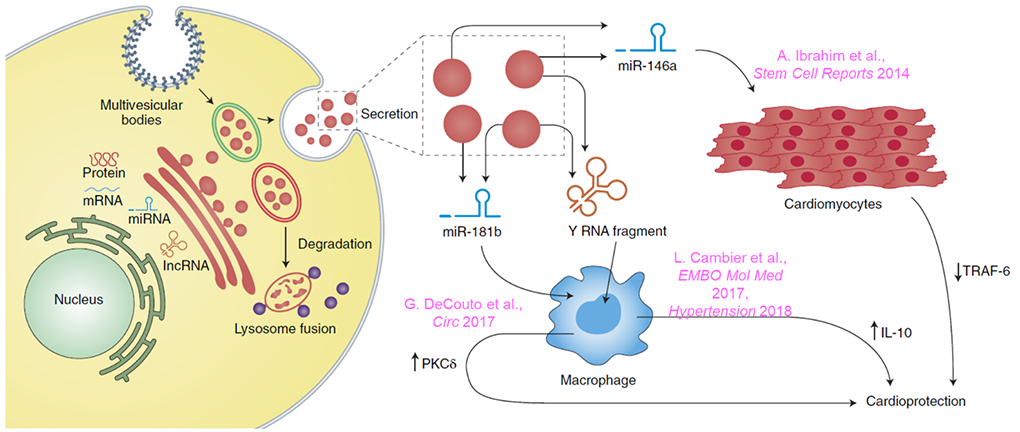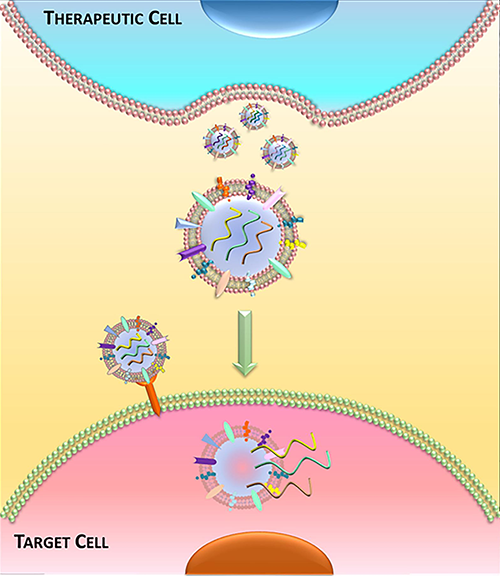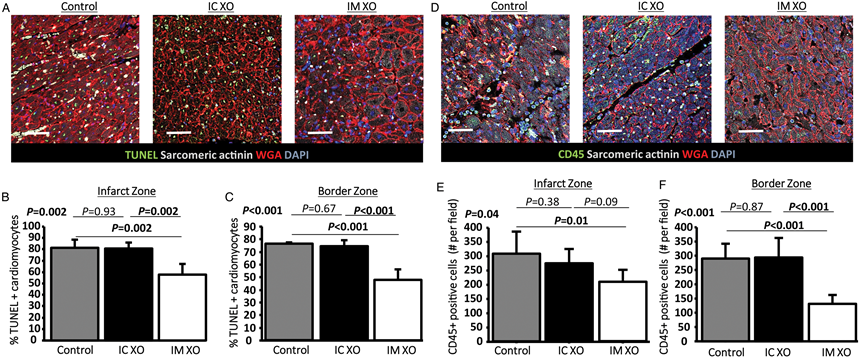Research Areas
Using Cardiosphere-Derived Stem Cells (CDC)
The research using cardiosphere-derived stem cells (CDCs) has demonstrated cells that are better in their functional repair capacity and in their angiogenic ability to secrete favorable paracrine factors, than other cells currently in clinical use. The regenerative medicine work took an unexpected and exciting turn when we realized the effects of CDCs are mediated not by canonical stem cell mechanisms, but rather by the secretion of nanovesicles called exosomes.

From Marbán E. A mechanistic roadmap for the clinical application of cardiac cell therapies. Nat Biomed Eng. 2018 Jun;2(6):353-361.
Exosomes Mediate the Benefits of CDC Therapy
As a result of our work, there is now virtually universal acceptance of the hypothesis that exosomes mediate the benefits of CDC therapy. Indeed, the concepts we first articulated for heart-derived cells have since been generalized to virtually all other cell types in the clinical development pathway; even pluripotent stem cell products are now acknowledged to act largely via exosome secretion. As a corollary of our work to define mechanisms of action of cardiac cell therapy, we have come to realize that exosomes are themselves viable next-generation therapeutic candidates, including treatment for various forms of muscular dystrophy.

Rogers RG, Ciullo A, Marbán E, Ibrahim AG. Extracellular vesicles as therapeutic agents for cardiac fibrosis. Front Physiol. 2020;11:479.
Preserved Ejection Fraction
We initially defined the engraftment, differentiation and functional benefit of CDCs in a murine and a porcine model of myocardial infarction, then went on to publish extensively on translational and clinical aspects of CDCs, including in models of heart failure with preserved ejection fraction.

Acute myocardial infarction study: apoptosis and inflammation. From Gallet R, Dawkins J, Valle J, Simsolo E, de Couto G, Middleton R, Tseliou E, Luthringer D, Kreke M, Smith RR, Marbán L, Ghaleh B, Marbán E. Exosomes secreted by cardiosphere-derived cells reduce scarring, attenuate adverse remodeling and improve function in acute and chronic porcine myocardial infarction. Eur Heart J. 2017 Jan 14;38(3):201-211.
Contact the Marbán Lab
8700 Beverly Blvd.
Davis Research Building, Room 1090
Los Angeles, CA 90048